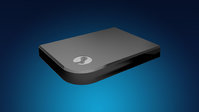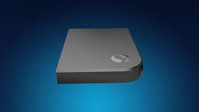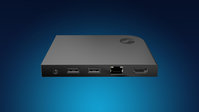- Joined
- May 29, 2007
- Messages
- 6,323
- Reaction score
- 1,136
As part of a press release distributed just moments ago, Valve have officially announced Source 2, the company's next generation video game engine. According to the press release, the engine, like its predecessor, will be free to use for content developers, helping to continue the PC's "dominance as the premiere content authoring platform" thanks to recent announcements regarding Unreal Engine 4 and Unity 5. As expected, Source 2 will focus on increasing creator productivity and user generated content by making it easier than ever. No release date has currently been announced.

As we speculated, a Vulkan-compatible version of Source 2 will be made available, supporting the next generation of OpenGL technology, currently set to be discussed in more detail during a GDC talk on Thursday, March 5th 2015. Unfortunately, that's all the information Valve currently has to share regarding Source 2, but the extremely long press release discusses a number of other topics Valve is showing off at GDC this week.
These include the reveal of Steam Link, a small device which will allow PCs, Macs, and Linux PCs to stream any or all of their Steam-related content across the same local network at 1080p 60hz with low latency. Steam Link will reportedly be made available this November for $49.99, and for $100 with a bundled Steam Controller in the United States, with more regions set to be announced closer to launch.
Another new technology has also been announced. Codenamed "Lighthouse", the software appears to function as the room scale tracking component of SteamVR, allowing a virtual reality headset such as the HTC Vive to track the player's movements in real time. Lighthouse can reportedly be incorporated into TVs, monitors, headsets, and other input devices.
The press release also discusses numerous already-announced projects, including Steam Machines, which will be shown off by Alienware and Falcon Northwest tomorrow before being released alongside Steam Link and the Steam Controller in November 2015. The Falcon Northwest Steam Machine being demonstrated is reportedly powerful enough to run the newly announced Unreal Tournament on a 4K monitor or at 1080p while maintaining a steady 120FPS, seemingly making it quite the beefy machine. Starting tomorrow, Valve and their partners will begin demonstrating the HTC Vive and various virtual reality software from the likes of Bossa Studios, Cloudhead Games, Dovetail Games, Google, Owlchemylabs, and many, many more.
If you're looking for a little bit more information, take a look at the official press release below. We'll be sure to bring you more from Valve in the near future as we learn more from GDC 2015.
As we speculated, a Vulkan-compatible version of Source 2 will be made available, supporting the next generation of OpenGL technology, currently set to be discussed in more detail during a GDC talk on Thursday, March 5th 2015. Unfortunately, that's all the information Valve currently has to share regarding Source 2, but the extremely long press release discusses a number of other topics Valve is showing off at GDC this week.
These include the reveal of Steam Link, a small device which will allow PCs, Macs, and Linux PCs to stream any or all of their Steam-related content across the same local network at 1080p 60hz with low latency. Steam Link will reportedly be made available this November for $49.99, and for $100 with a bundled Steam Controller in the United States, with more regions set to be announced closer to launch.
Another new technology has also been announced. Codenamed "Lighthouse", the software appears to function as the room scale tracking component of SteamVR, allowing a virtual reality headset such as the HTC Vive to track the player's movements in real time. Lighthouse can reportedly be incorporated into TVs, monitors, headsets, and other input devices.
The press release also discusses numerous already-announced projects, including Steam Machines, which will be shown off by Alienware and Falcon Northwest tomorrow before being released alongside Steam Link and the Steam Controller in November 2015. The Falcon Northwest Steam Machine being demonstrated is reportedly powerful enough to run the newly announced Unreal Tournament on a 4K monitor or at 1080p while maintaining a steady 120FPS, seemingly making it quite the beefy machine. Starting tomorrow, Valve and their partners will begin demonstrating the HTC Vive and various virtual reality software from the likes of Bossa Studios, Cloudhead Games, Dovetail Games, Google, Owlchemylabs, and many, many more.
If you're looking for a little bit more information, take a look at the official press release below. We'll be sure to bring you more from Valve in the near future as we learn more from GDC 2015.
VALVE ANNOUNCES LINK, SOURCE 2, STEAMVR, AND MORE AT GDC
Products and Technologies to Continue PC Gaming Momentum
March 3, 2015 - Valve announces a number of product and technologies at this week's Game Developers Conference (GDC) in San Francisco.
"We continue to see very strong growth in PC Gaming, with Steam growing 50% in the last 12 months," said Gabe Newell, Valve's president. "With these announcements we hope that we are helping build on that momentum."
Steam Machines, Windows PCs, Macs, and Linux PCs will be able to take advantage of a new product announced at GDC called Steam Link. Designed to extend your Steam experience to any room in the house, Steam Link allows you to stream all your Steam content from any PC or Steam Machine on the same home network. Supporting 1080p at 60Hz with low latency, Steam Link will be available this November for $49.99, and available with a Steam Controller for an additional $49.99 in the US (worldwide pricing to be released closer to launch).
Steam Machines from partners Alienware and Falcon Northwest are being shown, with Machines from a dozen other partners slated to release this November. Steam Machines will start at the same price point as game consoles, with higher performance. Customers interested in the best possible gaming experience can choose whichever components meet their needs. Epic will give a demonstration of the newly announced Unreal Tournament running on a 4K monitor driven by the Falcon Northwest Steam Machine. "We love this platform," said Tim Sweeney, founder of Epic Games. "Whether you're running incredibly detailed scenes at 4K or running 1080p at 120 FPS for an intense shooter experience, this brings world-class gaming and graphics to televisions with an open platform true to Valve's PC gaming roots."
Valve will show a virtual reality (VR) headset. Developer versions of the headset will be available this spring, and partner HTC will ship their Vive headset to consumers by the end of the year.
Two new technologies are part of the VR release - a room scale tracking system codenamed Lighthouse, and a VR input system. "In order to have a high quality VR experience, you need high resolution, high speed tracking," said Valve's Alan Yates. "Lighthouse gives us the ability to do this for an arbitrary number of targets at a low enough BOM cost that it can be incorporated into TVs, monitors, headsets, input devices, or mobile devices." Valve intends to make Lighthouse freely available to any hardware manufacturers interested in the technology.
"Now that we have Lighthouse, we have an important piece of the puzzle for tackling VR input devices," said Valve's Joe Ludwig. "The work on the Steam Controller gave us the base to build upon, so now we have touch and motion as integrated parts of the PC gaming experience."
"We've been working in VR for years and it was only until we used SteamVR's controllers and experienced the magic of absolute tracking that we were able to make the VR game we always wanted to make," said Alex Schwartz of Owlchemylabs.
VR demos being shown at GDC include work from Bossa Studios, Cloudhead Games, Dovetail Games, Fireproof Studios, Google, Owlchemylabs, Skillman & Hackett, Steel Wool Games, Vertigo Games, and Wevr.
Valve announced the Source 2 engine, the successor to the Source engine used in Valve's games since the launch of Counter-Strike: Source and Half-Life 2. "The value of a platform like the PC is how much it increases the productivity of those who use the platform. With Source 2, our focus is increasing creator productivity. Given how important user generated content is becoming, Source 2 is designed not for just the professional developer, but enabling gamers themselves to participate in the creation and development of their favorite games," said Valve's Jay Stelly. "We will be making Source 2 available for free to content developers. This combined with recent announcements by Epic and Unity will help continue the PCs dominance as the premiere content authoring platform."
Also as part of supporting PC gaming, Valve announced that it will be releasing a Vulkan-compatible version of the Source 2 engine. Vulkan is a cross-platform, cross-vendor 3D graphics API that allows game developers to get the most out of the latest graphics hardware, and ensures hardware developers that there is a consistent, low overhead method of taking advantage of products. Vulkan, previously called Next Generation OpenGL, is administered by the Khronos Group, along with other standards such as OpenCL, OpenGL, and WebGL.
GDC 2015 will mark the 13th anniversary of Valve's first public announcement of Steam, which has since become the leading platform for PC, Mac, and Linux games and software. In the last year, Steam realized the addition of many new services and features - including In-Home Streaming, Broadcasting, Music, and user-created stores - as it grew to over 125 million active accounts worldwide.
For more information, please visit www.steampowered.com/universe
Products and Technologies to Continue PC Gaming Momentum
March 3, 2015 - Valve announces a number of product and technologies at this week's Game Developers Conference (GDC) in San Francisco.
"We continue to see very strong growth in PC Gaming, with Steam growing 50% in the last 12 months," said Gabe Newell, Valve's president. "With these announcements we hope that we are helping build on that momentum."
Steam Machines, Windows PCs, Macs, and Linux PCs will be able to take advantage of a new product announced at GDC called Steam Link. Designed to extend your Steam experience to any room in the house, Steam Link allows you to stream all your Steam content from any PC or Steam Machine on the same home network. Supporting 1080p at 60Hz with low latency, Steam Link will be available this November for $49.99, and available with a Steam Controller for an additional $49.99 in the US (worldwide pricing to be released closer to launch).
Steam Machines from partners Alienware and Falcon Northwest are being shown, with Machines from a dozen other partners slated to release this November. Steam Machines will start at the same price point as game consoles, with higher performance. Customers interested in the best possible gaming experience can choose whichever components meet their needs. Epic will give a demonstration of the newly announced Unreal Tournament running on a 4K monitor driven by the Falcon Northwest Steam Machine. "We love this platform," said Tim Sweeney, founder of Epic Games. "Whether you're running incredibly detailed scenes at 4K or running 1080p at 120 FPS for an intense shooter experience, this brings world-class gaming and graphics to televisions with an open platform true to Valve's PC gaming roots."
Valve will show a virtual reality (VR) headset. Developer versions of the headset will be available this spring, and partner HTC will ship their Vive headset to consumers by the end of the year.
Two new technologies are part of the VR release - a room scale tracking system codenamed Lighthouse, and a VR input system. "In order to have a high quality VR experience, you need high resolution, high speed tracking," said Valve's Alan Yates. "Lighthouse gives us the ability to do this for an arbitrary number of targets at a low enough BOM cost that it can be incorporated into TVs, monitors, headsets, input devices, or mobile devices." Valve intends to make Lighthouse freely available to any hardware manufacturers interested in the technology.
"Now that we have Lighthouse, we have an important piece of the puzzle for tackling VR input devices," said Valve's Joe Ludwig. "The work on the Steam Controller gave us the base to build upon, so now we have touch and motion as integrated parts of the PC gaming experience."
"We've been working in VR for years and it was only until we used SteamVR's controllers and experienced the magic of absolute tracking that we were able to make the VR game we always wanted to make," said Alex Schwartz of Owlchemylabs.
VR demos being shown at GDC include work from Bossa Studios, Cloudhead Games, Dovetail Games, Fireproof Studios, Google, Owlchemylabs, Skillman & Hackett, Steel Wool Games, Vertigo Games, and Wevr.
Valve announced the Source 2 engine, the successor to the Source engine used in Valve's games since the launch of Counter-Strike: Source and Half-Life 2. "The value of a platform like the PC is how much it increases the productivity of those who use the platform. With Source 2, our focus is increasing creator productivity. Given how important user generated content is becoming, Source 2 is designed not for just the professional developer, but enabling gamers themselves to participate in the creation and development of their favorite games," said Valve's Jay Stelly. "We will be making Source 2 available for free to content developers. This combined with recent announcements by Epic and Unity will help continue the PCs dominance as the premiere content authoring platform."
Also as part of supporting PC gaming, Valve announced that it will be releasing a Vulkan-compatible version of the Source 2 engine. Vulkan is a cross-platform, cross-vendor 3D graphics API that allows game developers to get the most out of the latest graphics hardware, and ensures hardware developers that there is a consistent, low overhead method of taking advantage of products. Vulkan, previously called Next Generation OpenGL, is administered by the Khronos Group, along with other standards such as OpenCL, OpenGL, and WebGL.
GDC 2015 will mark the 13th anniversary of Valve's first public announcement of Steam, which has since become the leading platform for PC, Mac, and Linux games and software. In the last year, Steam realized the addition of many new services and features - including In-Home Streaming, Broadcasting, Music, and user-created stores - as it grew to over 125 million active accounts worldwide.
For more information, please visit www.steampowered.com/universe
Last edited:



